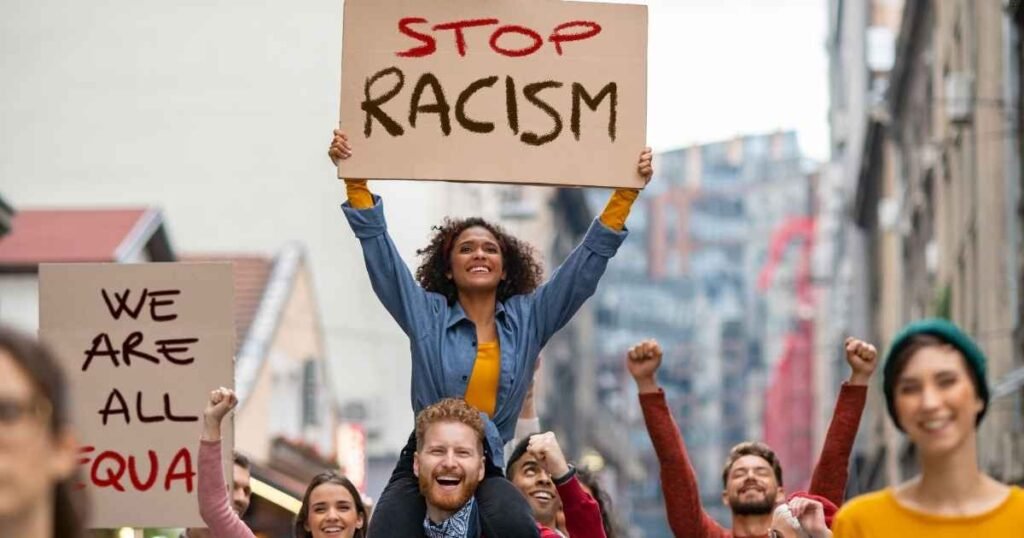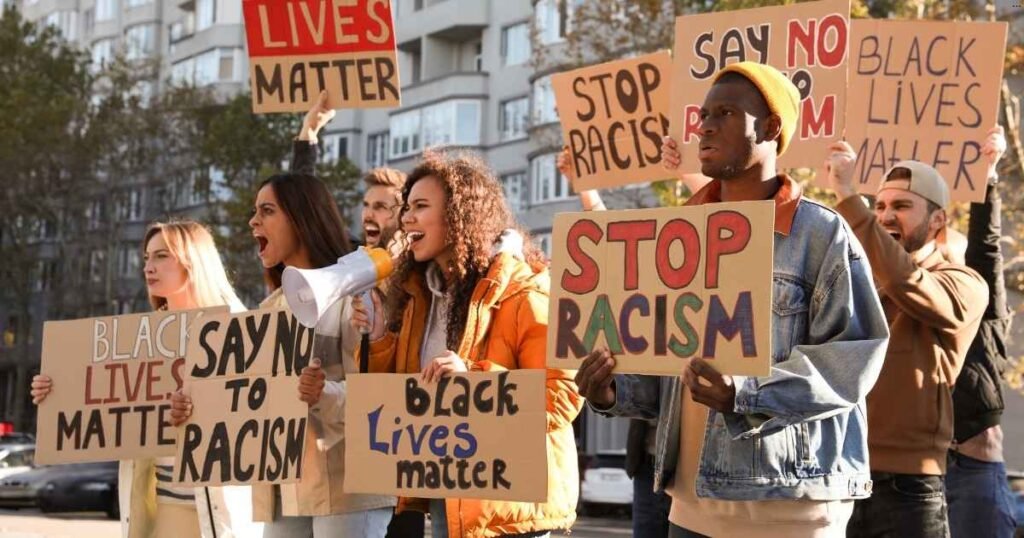Like a prayer commentary on racism is addressing social injustice requires a deep commitment to understanding, empathy, and action. Racism persists as a profound issue, deeply ingrained in societal structures and individual biases. By examining history and acknowledging the lived experiences of marginalized communities, we can begin to dismantle systemic inequalities. This effort calls for both personal reflection and collective responsibility, fostering an environment where equity and dignity are accessible to all.
Racism has long cast a shadow across societies worldwide, weaving itself into the fabric of history, culture, and institutions. The phrase “like a prayer commentary on racism” reflects both an acknowledgment of this deeply engrained issue and the sentiment of hope that arises in efforts to overcome it. Much like a prayer, it is a call to confront injustices while believing in the possibility of change. This commentary seeks to explore how racism has impacted individuals and communities and how love, unity, and hope have emerged as tools to dismantle its power.
This discussion isn’t a surface-level examination; it’s an exploration of the weight of racism and the growing resilience in combating it. Through understanding historical perspectives, recognizing present-day challenges, and envisioning pathways toward equality, this “like a prayer commentary on racism” provides a nuanced lens to view the topic and challenges and encourages each of us to act as catalysts for positive change.
Must Read: SerpClix vs SerpSEO: The Secret to Winning Rankings
Historical Roots of Racism and Its Enduring Impact
Early Systems of Oppression in a Like a Prayer Commentary on Racism
The roots of racism can be traced back to early civilizations where societal hierarchies were established based on ethnicity, culture, and physical differences. Systems of oppression, often justified by pseudo-scientific or religious beliefs, laid the foundation for exploitation and inequality. A “like a prayer commentary on racism” invites us to reflect on how these ancient practices set the stage for discrimination and shaped the world as we know it today.
Colonialism and Slavery Through the Lens of a Like a Prayer Commentary on Racism”
The colonial era brought about some of the most profound historical injustices, including the exploitation of enslaved populations and the erasure of Indigenous cultures. These periods were marked by systemic racism designed to prioritize economic gain over human dignity. A “like a prayer commentary on racism” highlights the enduring scars left by these practices, urging us to acknowledge their legacy in modern institutions.
Hope and Reflection in a Like a Prayer Commentary on Racism
While the weight of history is undeniable, the resilience and solidarity demonstrated across movements provide hope for a better future. A “like a prayer commentary on racism” reflects on how addressing historical injustices, fostering understanding, and cultivating unity can lead to meaningful progress toward equality and inclusion.
Hope as the Foundation for Change
- Hope as a Visionary Catalyst
A “like a prayer commentary on racism” illustrates how hope is essential for envisioning a future free from injustice and inequality. By fostering hope, individuals and communities can imagine possibilities for change and take the first steps toward realizing them.
- Hope in Collective Action
The power of unity lies in shared hope, as emphasized in a “like a prayer commentary on racism.” This shared sense of purpose drives collective action, inspiring people to come together across racial and cultural divides to challenge injustice and build equitable systems.
- Hope through Resilience
Resilience is a pillar of hope, as seen in a “like a prayer commentary on racism.” Despite challenges and setbacks, hope empowers individuals and communities to persevere, reinforcing their commitment to creating a fair and inclusive society.
- Hope as a Source of Empowerment
A “like a prayer commentary on racism” reflects on how hope can empower individuals to advocate for justice and equality. This empowerment fuels both personal growth and societal transformation, laying the groundwork for sustainable change.
Systemic Racism in Modern-Day Society

Education Inequality and a Like a Prayer Commentary on Racism
Systemic racism manifests prominently in the education system, where disparities in funding, resources, and opportunities leave marginalized communities at a disadvantage. A “like a prayer commentary on racism” shines a light on how these inequities perpetuate cycles of poverty and limit access to quality education for many minority groups. Addressing this issue requires systemic reform and the implementation of inclusive policies to ensure equity in educational opportunities.
Healthcare Disparities Highlighted by a Like a Prayer Commentary on Racism
Modern healthcare systems continue to exhibit the impacts of systemic racism, with significant disparities in access, treatment, and outcomes for people of color. A “like a prayer commentary on racism” examines how these inequities are rooted in historical neglect and bias, further widening health gaps between communities. Eliminating these disparities involves both addressing implicit biases within the industry and ensuring equal healthcare access for all individuals.
Employment Barriers and a Like a Prayer Commentary on Racism
The workplace remains another arena where systemic racism persists, often reflected in wage gaps, limited advancement opportunities, and hiring discrimination for minority groups. A “like a prayer commentary on racism” underscores the importance of creating diverse work environments that value equity and accountability. By dismantling these barriers, organizations can foster more inclusive and fair professional spaces.
Building Bridges Across Differences
- Fostering Dialogue and Understanding: Open conversations about race and inequality are essential for breaking down misconceptions. A “like a prayer commentary on racism” emphasizes the power of honest dialogue in creating mutual understanding and empathy between diverse groups.
- Promoting Inclusive Education: Incorporating diverse perspectives in educational curriculums helps create awareness and challenges entrenched biases. A “like a prayer commentary on racism” highlights the importance of education as a tool for building bridges across cultural and racial differences.
- Supporting Community Initiatives: Grassroots efforts and community programs dedicated to equity and justice are pivotal. A “like a prayer commentary on racism” reflects on how such initiatives can unite people around shared goals and solutions.
- Encouraging Allyship and Advocacy: Standing in solidarity with marginalized communities is crucial to dismantling systemic racism. A “like a prayer commentary on racism” underlines the importance of active allyship in achieving meaningful and lasting change.
Comparisons to Other Socially Conscious Songs of the Era
Here’s a comparison table for like a prayer commentary on racism and other socially conscious songs of the era:
| Song Title | Artist | Theme/Message | Connection to “like a prayer commentary on racism” |
|---|---|---|---|
| Like a Prayer | Madonna | Racial injustice, religious symbolism, and empowerment | Directly aligns with like a prayer commentary on racism, addressing racial themes through powerful imagery and lyrics |
| Man in the Mirror | Michael Jackson | Personal responsibility for social change | Similar to like a prayer commentary on racism, it calls for reflection and action against inequality |
| Fight the Power | Public Enemy | Racism, oppression, and resistance | A more direct and aggressive approach compared to like a prayer commentary on racism, but both address systemic issues |
| Black or White | Michael Jackson | Racial unity and breaking down prejudices | Shares the hopeful aspect of like a prayer commentary on racism, advocating for racial harmony |
| We Shall Be Free | Garth Brooks | Equality, freedom, and social justice | While broader, it resonates with like a prayer commentary on racism in its call for inclusivity |
Depiction of Hope and Unity in the Song
- The song emphasizes the universal desire for peace and harmony, transcending barriers of race and background.
- Lyrics advocate for solidarity and understanding, weaving a message of inclusivity and mutual respect.
- Through its melodic elements, the song evokes an uplifting tone, inspiring listeners toward a shared vision of a better future.
- The chorus serves as a rallying cry, uniting individuals in the pursuit of equality and compassion.
- Symbolic imagery throughout the song reinforces themes of hope, renewal, and collective progress.
Artistic Responsibility in Addressing Social Issues
Art has always been a powerful medium for addressing and reflecting upon complex social issues, including systemic racism. Creators carry a significant responsibility to use their platforms to amplify marginalized voices and foster conversations that challenge injustice. A “like a prayer commentary on racism” illustrates how art can serve as both a mirror to society’s struggles and a beacon guiding it toward greater equity. Through music, visual arts, literature, and performance, artists can evoke empathy, inspire change, and encourage audiences to critically examine the world around them.
Furthermore, artists must ensure that their work acknowledges and uplifts the lived experiences of those who have historically been silenced. A “like a prayer commentary on racism” demonstrates the power of intentional, thoughtful artistry in addressing inequality, reminding creators of the ethical duty to approach such subjects with authenticity and respect. . By stepping into this role, artists not only inspire collective action but also contribute to shaping a more inclusive and just future through their creative endeavors.
Influence of Like a Prayer on Later Social Movements
- Highlighted the potential of music and art as tools for social commentary and activism, inspiring subsequent generations of artists to incorporate social justice themes into their work.
- Encouraged conversations about race, religion, and systemic inequality in broader societal contexts, breaking taboos and fostering greater awareness.
- Served as an example of bold and controversial creativity, motivating artists and activists to challenge norms and speak out against injustice fearlessly.
- Provided a cultural reference point that later movements could draw upon, emphasizing the enduring relevance of addressing societal issues through popular media.
- Inspired collaborations between artists and advocacy groups, demonstrating the power of integrating art into campaigns for social change.
Critiques and Counterarguments to the Song’s Impact
Overshadowing of Key Themes
While “Like a Prayer” was celebrated for its boldness and creativity, some critics argue that its commentary on racism was diluted by the more sensational aspects of its music video. The provocative imagery and religious symbolism gained widespread attention, but they often overshadowed the deeper themes addressing racial injustice. This left some questioning whether the song’s intent was fully realized or whether its commentary on racism received the recognition it deserved.
Misinterpretation of Messages
Another critique centers on the diverse interpretations of the song and music video. For some audiences, the religious and provocative visuals became the central focus, rather than interpreting “Like a Prayer” as a commentary on racism. This divergence in public reception highlights the challenge of balancing artistic expression with clear advocacy messaging, suggesting that the song’s impact may not have been uniformly understood.
Commercial Exploitation of Social Issues
There has also been criticism that the song leveraged serious issues, like racism, for commercial success. Critics argue that couching “Like a Prayer” as a commentary on racism within a highly commercialized pop framework risked trivializing the very social issues it aimed to address. This perspective raises questions about the balance between genuine advocacy and the role of art as a profit-driven industry.
Together Toward Justice and Equality
When the fight feels daunting, we must remember that collective action multiplies impact. The broader the community engaged in combatting racism, the more robust the movement becomes. Faith groups, educators, businesses, and everyday individuals all have roles to play.No single blog post, symposium, or rally can undo centuries of oppression. But like countless prayers combined, each effort adds strength to the cause. Together, these voices form a harmonious cry for justice; they echo through halls of governance, schools, and hearts around the globe.
The “like a prayer commentary on racism” awakens us to take part in this collective voice. Whether it’s volunteering, donating, teaching or simply having conversations with loved ones, every action has significance. These threads of hope, woven together, create the future we aspire to.Racism’s grip on society has endured too long, but the movements fueled by hope, passion, and resilience offer a clear message that change is not only possible — it is inevitable.
Final Reflections on Art, Racism, and Hope
Art has long served as a mirror to society, reflecting both its beauty and its flaws. It has the profound ability to address complex issues, such as racism, in ways that resonate deeply with humanity. The “like a prayer commentary on racism” reminds us of the power of collective expression, as art becomes a vessel to amplify voices that demand justice and equality. Through music, literature, visual arts, and performance, artists shine a light on systemic oppression and inspire movements that challenge the status quo.
At its core, art embodies hope. It fosters empathy, builds connections, and ignites action, proving that change is within reach. The “like a prayer commentary on racism” serves as a testament that transformation is neither distant nor unattainable. Rather, it is unfolding through unyielding efforts and creative expressions that unite us in a shared vision for a fair and equitable future.



